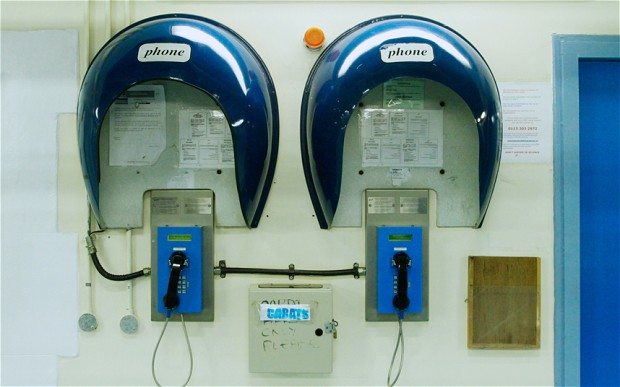A New Age of Humane Treatment: How Technology Can Change Prisons
Peter Donnell / 8 years ago

Corporations all over New Zealand are increasingly becoming more high-tech as a way to increase productivity while cutting costs. That’s where companies like BlueJeans enter the picture, with their video conferencing equipment, making it possible to hold meetings across a variety of platforms. But today’s high-tech world also makes it possible for prisons to treat its inmates more humanely.
The concept of humane treatment has been at the forefront of the New Zealand prison system since it is believed that by treating prisoners with care and respect as well as giving them the means to integrate themselves back into society, this can help to prevent them from walking back down a criminal path. It is based on the concept of humane treatment in action that one of the current debates within the New Zealand government has been to implement new technological methods into the way in which prisoners are dealt with. This is due to the need for both rehabilitation as well as lowering the overall cost of management in today’s prison system.
Fewer Guards and Fewer Walls
One of the first proposed changes for the New Zealand prison system is the implementation of RFID prisoner tracking which would enable the prison guards to monitor the movements of prisons throughout the facility. Basically, as explained by Computerworld.co.nz, the system utilizes medical grade RFID chips which will be placed into prisoners as a means of tracking their movement throughout the prison which would result in a faster and more efficient method of prisoner tracking. The Identity Chip, a small innocuous device no bigger than a grain of rice, can be surgically inserted within the skin of a prisoner enabling a safe and efficient way for prison staff to access the personal history of prisoners as well as track their movements within the jail without having to track them via CCTV cameras and prison personnel.
The RFID system can also limit the ability of prisoners to enter particular areas of the prison by keying the RFID frequency emitted by the chips to the door locks which helps to minimize instances where prisoners inadvertently get a hold of the keys to a restricted area of the prison. Through the implementation of a prisoner tracking system, the New Zealand government will be able to save significant amounts of money on the cost of prison operations. This in turn could go towards improving the conditions within prisons such as better access to medical care and more productive activities (i.e. classes so that inmates can learn skills which they can apply outside of prison). It is expected that once the tracking system has been successfully implemented, this will result in altered operations for local prison systems towards more efficient and effective prison management without having to scale up personnel.
Changing Prisoner Visits
Aside from using RFID tags on prisoners, another change that has been implemented over the past few years has been the use of video conferencing in order to create a means by which families and friends can stay in touch with their loved ones that have been incarcerated in prison. Globalmed.com explains that this program was implemented as a means of enabling prisoners to maintain ties with their family members and friends outside of prison. Medscape.com states that by maintaining these ties and having the prisoners know that they have people missing them and waiting for them outside the prison that this can aide in their rehabilitation. Such a notion does have a lot of promise since it is thought that one of the reasons why criminals go back to being criminals after their prison time is over is because they believe that there is nothing more for them in society. If they can see that there are people that love them and are missing them, it is likely that rehabilitative measures are going to be more successful due to the desire of a prisoner to continue to maintain such bonds.
Creating Access to Online Courses
Another possible change that may be underway in the New Zealand prison system is the potential for prisoners to have access to online lessons. This can range from enabling them to finish high school or even earn a certificate for a particular skill such as plumbing, construction, etc. The point of this system is help prisoners integrate better into society once they are out of prison.
Conclusion
Through the implementation of an RFID prisoner tracking system, the job of the support staff will be that much easier since they will be able to immediately monitor and restrict the movement of prisoners throughout the facility. By knowing where all prisoners are at all times, this helps to reduce the need for a block by block examination of the entire facilities of the prison and makes their job safer since they do not need to be among the general prison population to conduct a daily headcount of the prisoners. Aside from this, the use of video conferencing also aides in helping prisoners realize the need to become a positive part of society through proper rehabilitation and potentially even taking some of the prison sponsored courses so that they will be able to have some means of earning a livelihood once they are out of jail.



















